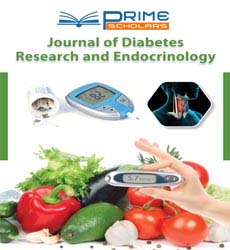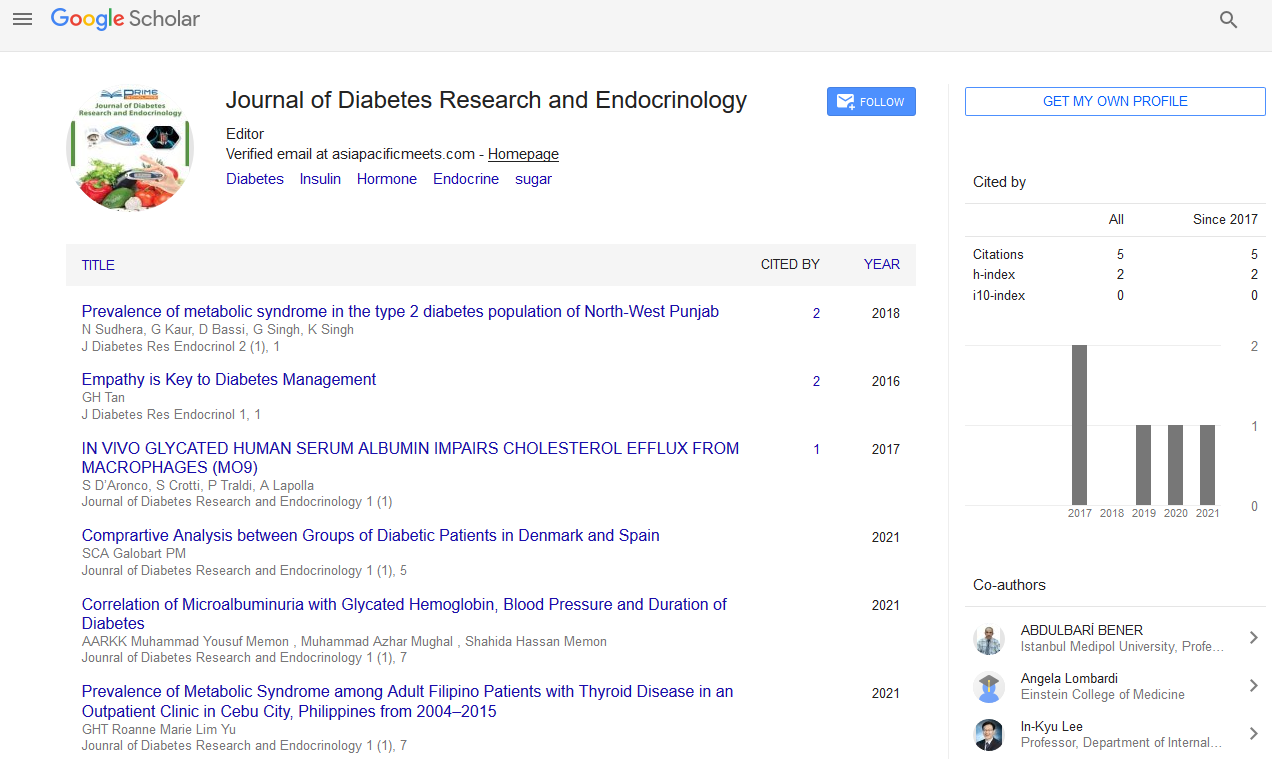Commentary Article - (2022) Volume 6, Issue 1
In Adults with Obesity, Differences in Intake between Subsequent 24-
Hour Dietary Recalls Cause Significant Reporting Bias
1Department of Diabetology, Nanjing University, China
*Correspondence:
Jun HyunHan, Department of Diabetology, Nanjing University,
China,
Email:
Received: 03-Jan-2022, Manuscript No. IPJDRE-22-12593;
Editor assigned: 05-Jan-2022, Pre QC No. PJDRE-22-12593(PQ);
Reviewed: 19-Jan-2022, QC No. IPJDRE-22-12593;
Revised: 24-Jan-2022, Manuscript No. IPJDRE-22-12593(R);
Published:
31-Jan-2022, DOI: 10.36648/09768610.6.1.7.
Description
To assist dietitians and doctors in the planning and execution
of nutrient administration, an in-depth understanding of the
dietary examples of people with obesity is required practically
speaking and examination. Using data from the NutriGen Study,
we wanted to examine the consistency of energy, large-scale,
and micronutrient revealed admissions in four non-successful
24-hour dietary reviews from 388 obese adults. Between
the first and subsequent 24-hour reviews, there were significant
reductions in detailed energy and a few, large-scale and
micronutrient admissions. In awareness investigations, critical
contrasts of revealed admissions were identified, implying that
the main review (as well as the only one performed nearby, up
close and personal) could be a place of predisposition. After
accounting for the misleading disclosure rate, the differences
in admissions between the end of the week and the work day
were non-measurable in males, females, or overall.
To counteract this likely tendency, studies should be meticulously
managed from the planning stage through the review’s
examination and translation phases. Prior to averaging explicit
admissions across all meetings of revealing, a preliminary investigation
should be conducted to determine whether a specific
time point had significant differences from any other time
points and to outline expected sources of inclination: detailing
predisposition, preparing inclination, or conduct changes could
be responsible for such differences.24 hour dietary reviews
provide measurements of assessed food intake, which is useful
for studies that link supplement intake to infections or other
health-related outcomes. The multiple pass 24-hour review
strategy for assessing food admission has been shown to be
a reliable method for assessing healthy admissions in people
who are overweight. In most cases, a few 24-hour reviews are
required to allow enough time to catch intraindividual consumption
variations. Depending on the outcome of the review,
the recommended number of 24-hour reviews varies, ranging from at least two (for the correlation of protein and potassium
admission between European nations) to a maximum of
10-15 days (for evaluating extensive weight control plans over
a multi-month period). Jackson and his colleagues (Jackson et
al.) To reduce irregular mistakes, a limit of eight 24-hour reviews
was proposed in an overweight and large population.
A few authors have argued that averaging a few 24-hour dietary
admissions is not a reasonable way to represent precise
errors in the review’s design. In this type of evaluation, this
technique is useful just to represent arbitrary blunders. This
study discovered that adults with obesity had different energy
and supplement admissions between meetings 1 and 2, as well
as meetings 2 and 4.
This study discovered that adults with obesity had different energy
and supplement admissions between meetings 1 and 2,
as well as meetings 2 and 4. When comparing the mean admissions
of each of the four 24-hour reviews with mean admissions
when each of the primary, second, third, and fourth 24-hour
reviews were rejected from the mean, huge drops in detailed
admissions were observed, implying that the primary review
(also the only one performed nearby, face-to-face) could be a
significant place of predisposition. As a result, before deciding
whether to use the data from rehashed 24-hour reviews for
further analysis, a preliminary examination of expected differences
between time focuses should be conducted to see if a
meeting explicit inclination exists, which could be related to
using a different method for revealing or correspondence.
Acknowledgement
None.
Conflict of Interest
We have no conflict of interests to disclose and the manuscript
has been read and approved by all named authors.
Copyright: This is an open access article distributed under the terms of the Creative Commons Attribution License, which permits unrestricted use, distribution, and reproduction in any medium, provided the original work is properly cited.

